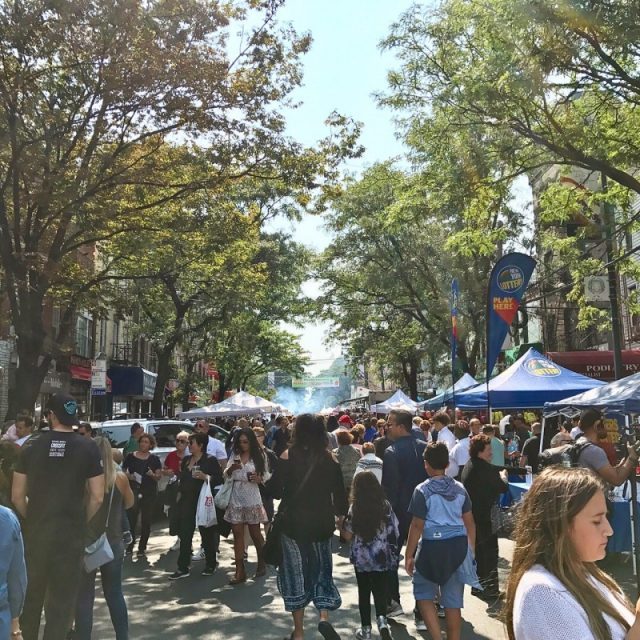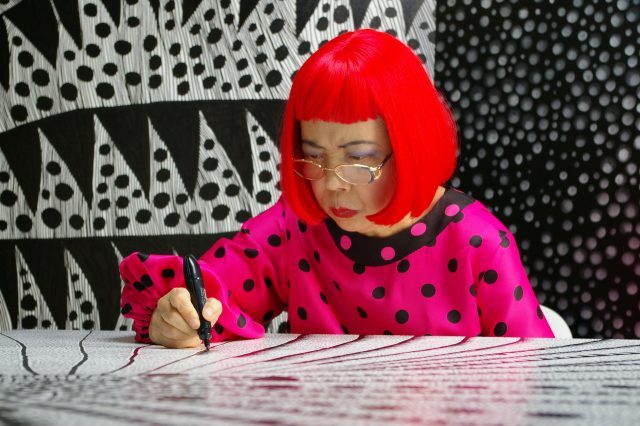
Documentary explores fascinating life and career of Japanese artist Yayoi Kusama (photo © Tokyo Lee Productions, Inc. / courtesy of Magnolia Pictures)
KUSAMA: INFINITY (Heather Lenz, 2018)
Film Forum
209 West Houston St.
Opens Friday, September 7
212-727-8110
filmforum.org
www.kusamamovie.com
 I remember the buzz in the room back in July 2012 at the press preview for the “Yayoi Kusama” retrospective at the old Whitney. Even among all the jaded art critics, there was palpable excitement at the rumor that Kusama herself might be attending the event. Alas, it was not to be. But now everyone can feel like they’re in the same room as the iconoclastic Japanese artist when watching Heather Lenz’s infinitely entertaining documentary, Kusama: Infinity, opening September 7 at Film Forum. Over the course of her seven-decade career, Kusama has explored the concepts of infinity and eternity through painting, sculpture, performance art, film, and installation, highlighted by an obsession with endless circles and mirrored reflections. “I convert the energy of life into dots of the universe. And that energy along with love flies into the sky,” she explains. Traumatic childhood experiences deeply influenced her life and art; she began painting when she was eight years old in rural Matsumoto City, where her unhappy parents ran a wholesale seed business (and her mother would tear up her drawings). Now eighty-nine, she still works every day, going from the Seiwa Hospital for the Mentally Ill, where she has lived voluntarily since 1977, to her studio, which is filled with her captivating works-in-progress. Lenz zooms in for extreme close-ups of the artist surrounded by canvases, as if she is the biggest dot (or seed?) in her universe. “So much of Kusama’s art seeks to re-create that [childhood] experience in one form or another,” notes Alexandra Munroe, senior curator of Asian Art at the Guggenheim. “It is literally an experience of being lost into her physical environment, of losing her selfhood in this space that is moving rapidly, and expanding rapidly.”
I remember the buzz in the room back in July 2012 at the press preview for the “Yayoi Kusama” retrospective at the old Whitney. Even among all the jaded art critics, there was palpable excitement at the rumor that Kusama herself might be attending the event. Alas, it was not to be. But now everyone can feel like they’re in the same room as the iconoclastic Japanese artist when watching Heather Lenz’s infinitely entertaining documentary, Kusama: Infinity, opening September 7 at Film Forum. Over the course of her seven-decade career, Kusama has explored the concepts of infinity and eternity through painting, sculpture, performance art, film, and installation, highlighted by an obsession with endless circles and mirrored reflections. “I convert the energy of life into dots of the universe. And that energy along with love flies into the sky,” she explains. Traumatic childhood experiences deeply influenced her life and art; she began painting when she was eight years old in rural Matsumoto City, where her unhappy parents ran a wholesale seed business (and her mother would tear up her drawings). Now eighty-nine, she still works every day, going from the Seiwa Hospital for the Mentally Ill, where she has lived voluntarily since 1977, to her studio, which is filled with her captivating works-in-progress. Lenz zooms in for extreme close-ups of the artist surrounded by canvases, as if she is the biggest dot (or seed?) in her universe. “So much of Kusama’s art seeks to re-create that [childhood] experience in one form or another,” notes Alexandra Munroe, senior curator of Asian Art at the Guggenheim. “It is literally an experience of being lost into her physical environment, of losing her selfhood in this space that is moving rapidly, and expanding rapidly.”
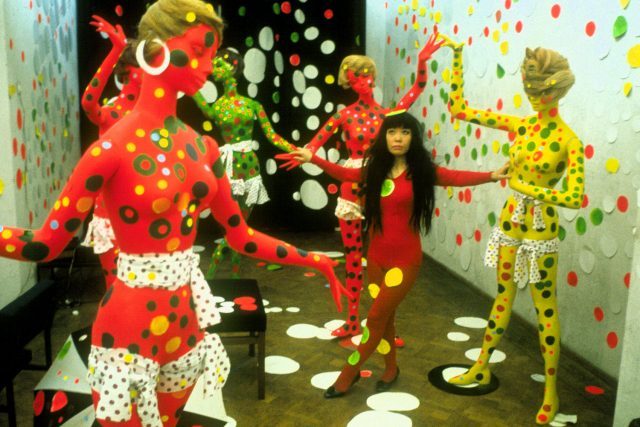
Artist Yayoi Kusama poses in the Orez Gallery in the Hague in 1965 (photo by Harrie Verstappen / courtesy of Magnolia Pictures)
Kusama was determined to be successful and to stand out from the crowd, as shown in dozens of color and black-and-white photographs of her in various kimono, dot-covered outfits, revealing apparel, and great hats, always sporting that unique bang hairstyle. “I promised myself that I would conquer New York and make my name in the world with my passion for the arts and my creative energy,” she explains. She was not about to let anything stop her, least of all her gender and her heritage. She was angry when it appeared that such artists as Andy Warhol, Claes Oldenburg, and Lucas Samaras copied specific aspects of her work and gained greater notice for it. She sought advice from Georgia O’Keeffe. She got involved in an odd relationship with reclusive artist Joseph Cornell. She was shunned in her home country because of her penchant for nudity. She occasionally gets teary looking back at her life. The film features sensational archival video and photographs from some of Kusama’s seminal happenings and exhibitions, from “Aggregation: One Thousand Boats Show” to “Yayoi Kusama: A Retrospective” at CICA, from her “Narcissus Garden” intervention at the 1966 Venice Biennale, where she was selling individual mirror balls she had arranged on a lawn, to 1969’s “Grand Orgy to Awaken the Dead,” in which the fiercely antiwar artist read “Thoughts on the Mausoleum of Modern Art” as eight participants ran around naked in MoMA’s sculpture garden. (This summer, Kusama brought “Narcissus Garden” to New York for MoMA PS1’s biannual Rockaway! show.) There are also clips from the revolutionary 1967 psychedelic art film Kusama’s Self-Obliteration, made by Jud Yalkut and Kusama.
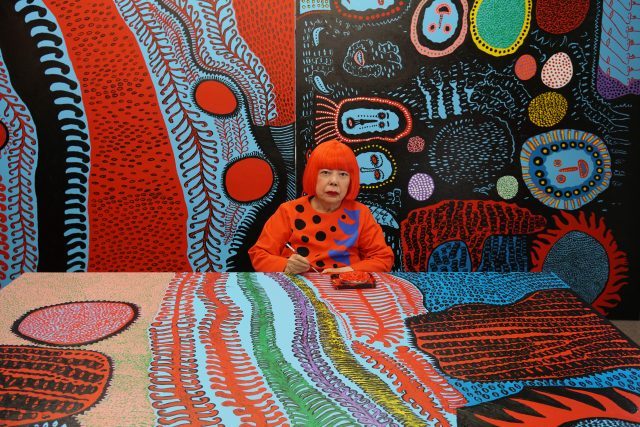
At the age of eighty-nine, Yayoi Kusama still works in her studio every day (Image © Yayoi Kusama / courtesy of David Zwirner, New York; Ota Fine Arts, Tokyo/Singapore/Shanghai; Victoria Miro, London; YAYOI KUSAMA Inc.)
Lenz, who will participate in a Q&A at Film Forum on September 7 after the 7:45 screening, talks to a wide range of people who provide intriguing perspectives on the artist and her work, including Kusama dancer Jeanette Hart Coriddi, former Matsumoto City mayor Tadashi Aruga, David Zwirner director Hanna Schouwink, psychoanalyst and art collector Judith E. Vida, MD, longtime best friend Akira Iinuma, artists Carolee Schneemann, Ed Clark, and Frank Stella, curators Marie Laurberg and Lynn Zelevansky, Joshua Light Show founder Joshua White, and Yayoi Kusama Museum director Akira Tatehata. CUNY Kingsborough art history professor Midori Yamamura says, “Her diagnosis is of obsessive-compulsive neuroses. Once something enters into her mind, she cannot get rid of it.” Former art dealer Beatrice Perry of the Gres Gallery adds of Kusama’s Infinity Net series, “I’d never seen anything like it. They had some kind of magic. You couldn’t stop looking at them, and you didn’t know where they were going. They were hypnotic.” And gallery owner Richard Castellane remembers, “She was taking away your ability to focus, breaking all boundaries of space. . . . This was the great breaking point in art. No longer are you the viewer the master; she’s the master.” Kusama’s mastery is still evident today, as prices paid for her artwork continue to skyrocket — she’s recognized as the top-selling woman artist in the world — and fans wait on long lines for hours and hours to spend thirty seconds inside one of her Infinity Mirrored Rooms. In addition, Lenz has done a masterful job giving us a Kusama we have never seen before. Despite her difficult, challenging life, the extraordinary Kusama declares, “I want to live forever.” And in the very personal, intimate, and infinite world she has created and Lenz has masterfully revealed, who’s to say she won’t?
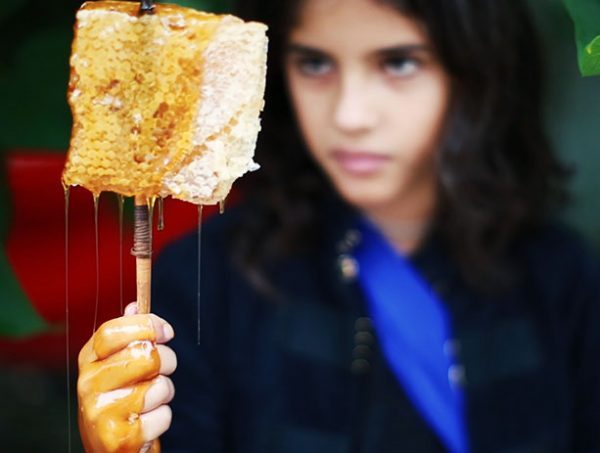
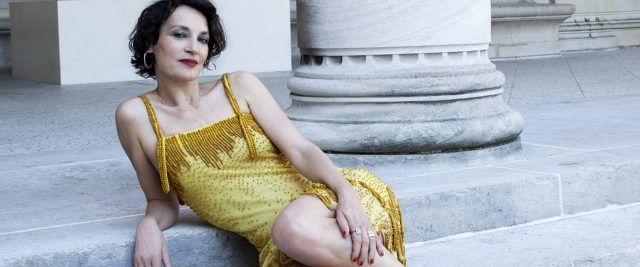
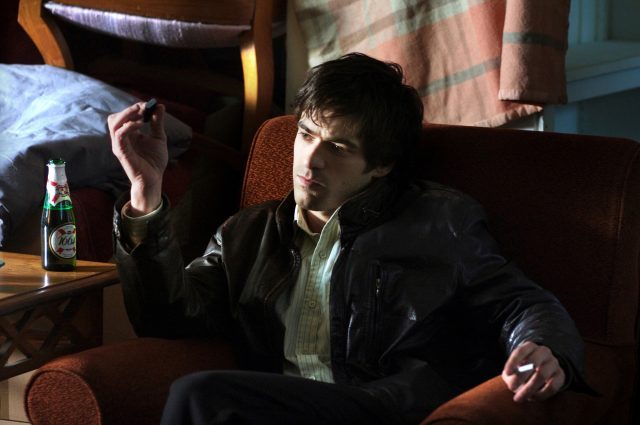
 In a relatively unique change of pace, the French remade a favorite American underground film. Director Jacques Audiard and screenwriter Tonino Benacquista followed up their international hit Read My Lips (2001) with The Beat That My Heart Skipped, a creative, moody remake of James Toback’s Fingers (1978), which starred Harvey Keitel as a New York City kid forced to choose between the piano and the mob. Audiard moves the film to the mean streets of Paris, where Tom (Romain Duris) attempts to regain his childhood musical virtuosity, which he gave up after his mother’s tragic death. As he begins to train with a Vietnamese piano student-teacher (Linh-Dan Pham) who does not speak French, his crooked partners continue to reel him into their low-rent, dangerous real estate scams. Ever the antihero, Tom also has a poignant love-hate relationship with his father, played by Niels Arestrup in a marvelous yellow get-up. As Tom’s worlds collide, he is constantly aware of protecting his fingers, which he needs to perform Bach’s Toccata in E Minor at an important audition. The film, which takes a while to really develop, is shot in long takes with a handheld camera, keeping Tom boxed into his claustrophobic situation. Songs by Bloc Party and the Kills keep things on edge, mixing well with Bach and Alexandre Desplat’s evocative award-winning score. Winner of eight César Awards, The Beat That My Heart Skipped is screening September 12 at MoMA’s Education Center as part of “Jacques Audiard,” which celebrates the career of the French filmmaker upon the upcoming release of his first English-language feature, The Sisters Brothers; the series continues September 14 with the director’s 1994 thriller, See How They Fall, starring Jean Yanne, Jean-Louis Trintignant, and Matthieu Kassovitz, before concluding with the new work on September 20, with Audiard and costar John C. Reilly participating in a Q&A.
In a relatively unique change of pace, the French remade a favorite American underground film. Director Jacques Audiard and screenwriter Tonino Benacquista followed up their international hit Read My Lips (2001) with The Beat That My Heart Skipped, a creative, moody remake of James Toback’s Fingers (1978), which starred Harvey Keitel as a New York City kid forced to choose between the piano and the mob. Audiard moves the film to the mean streets of Paris, where Tom (Romain Duris) attempts to regain his childhood musical virtuosity, which he gave up after his mother’s tragic death. As he begins to train with a Vietnamese piano student-teacher (Linh-Dan Pham) who does not speak French, his crooked partners continue to reel him into their low-rent, dangerous real estate scams. Ever the antihero, Tom also has a poignant love-hate relationship with his father, played by Niels Arestrup in a marvelous yellow get-up. As Tom’s worlds collide, he is constantly aware of protecting his fingers, which he needs to perform Bach’s Toccata in E Minor at an important audition. The film, which takes a while to really develop, is shot in long takes with a handheld camera, keeping Tom boxed into his claustrophobic situation. Songs by Bloc Party and the Kills keep things on edge, mixing well with Bach and Alexandre Desplat’s evocative award-winning score. Winner of eight César Awards, The Beat That My Heart Skipped is screening September 12 at MoMA’s Education Center as part of “Jacques Audiard,” which celebrates the career of the French filmmaker upon the upcoming release of his first English-language feature, The Sisters Brothers; the series continues September 14 with the director’s 1994 thriller, See How They Fall, starring Jean Yanne, Jean-Louis Trintignant, and Matthieu Kassovitz, before concluding with the new work on September 20, with Audiard and costar John C. Reilly participating in a Q&A.
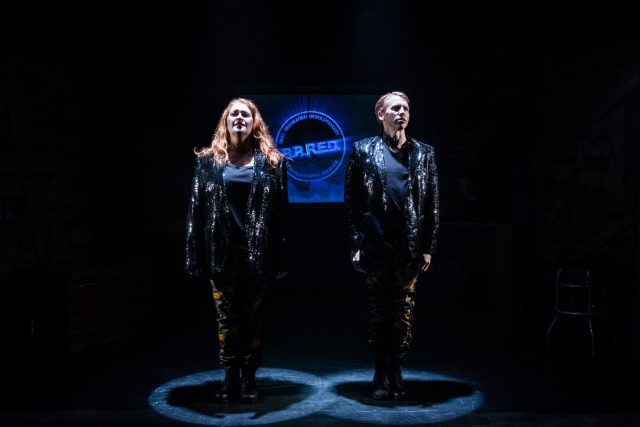
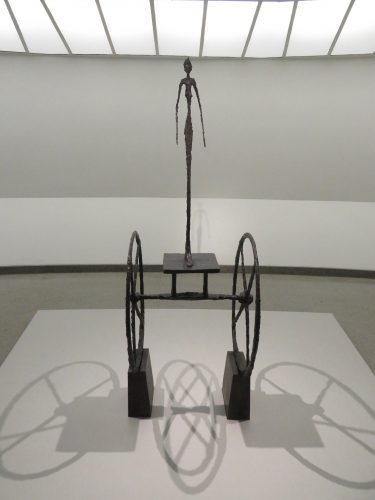
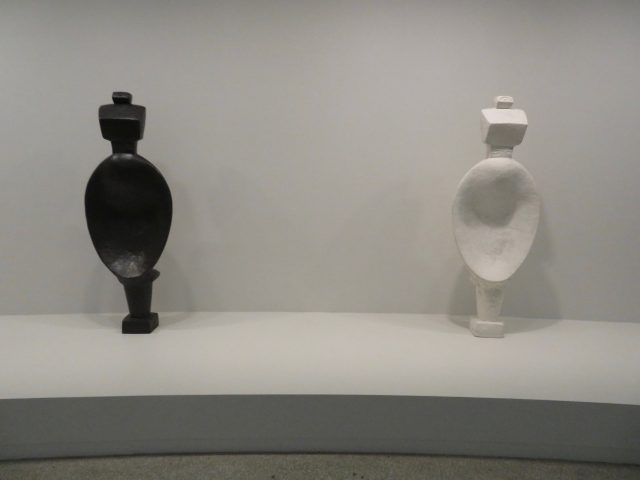
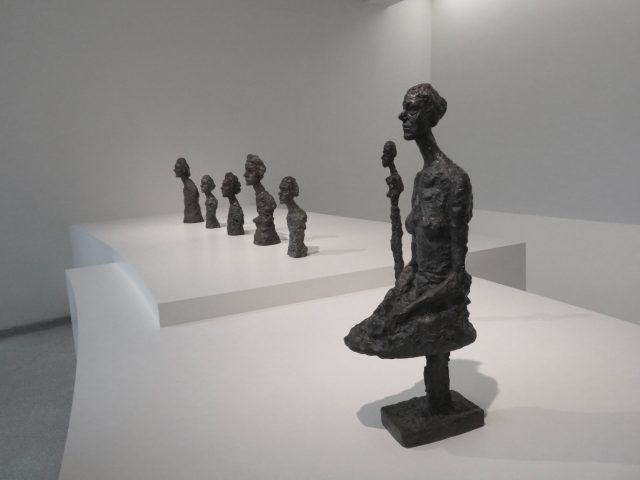
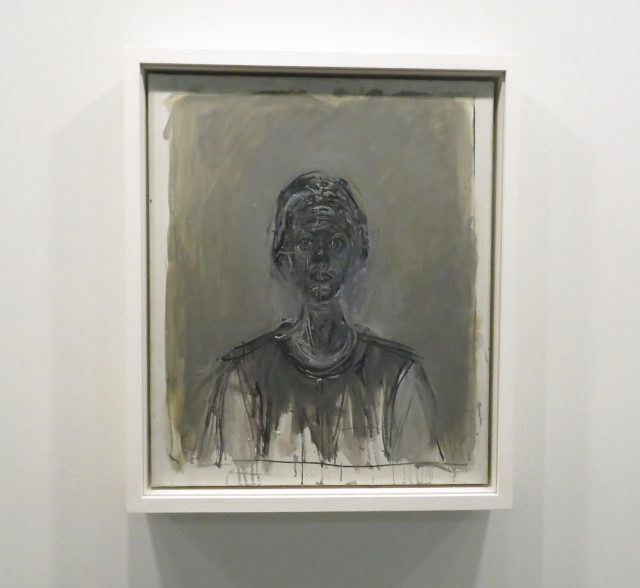

 I remember the buzz in the room back in July 2012 at the press preview for the “Yayoi Kusama” retrospective at the old Whitney. Even among all the jaded art critics, there was palpable excitement at the rumor that Kusama herself might be attending the event. Alas, it was not to be. But now everyone can feel like they’re in the same room as the iconoclastic Japanese artist when watching Heather Lenz’s infinitely entertaining documentary, Kusama: Infinity, opening September 7 at Film Forum. Over the course of her seven-decade career, Kusama has explored the concepts of infinity and eternity through painting, sculpture, performance art, film, and installation, highlighted by an obsession with endless circles and mirrored reflections. “I convert the energy of life into dots of the universe. And that energy along with love flies into the sky,” she explains. Traumatic childhood experiences deeply influenced her life and art; she began painting when she was eight years old in rural Matsumoto City, where her unhappy parents ran a wholesale seed business (and her mother would tear up her drawings). Now eighty-nine, she still works every day, going from the Seiwa Hospital for the Mentally Ill, where she has lived voluntarily since 1977, to her studio, which is filled with her captivating works-in-progress. Lenz zooms in for extreme close-ups of the artist surrounded by canvases, as if she is the biggest dot (or seed?) in her universe. “So much of Kusama’s art seeks to re-create that [childhood] experience in one form or another,” notes Alexandra Munroe, senior curator of Asian Art at the Guggenheim. “It is literally an experience of being lost into her physical environment, of losing her selfhood in this space that is moving rapidly, and expanding rapidly.”
I remember the buzz in the room back in July 2012 at the press preview for the “Yayoi Kusama” retrospective at the old Whitney. Even among all the jaded art critics, there was palpable excitement at the rumor that Kusama herself might be attending the event. Alas, it was not to be. But now everyone can feel like they’re in the same room as the iconoclastic Japanese artist when watching Heather Lenz’s infinitely entertaining documentary, Kusama: Infinity, opening September 7 at Film Forum. Over the course of her seven-decade career, Kusama has explored the concepts of infinity and eternity through painting, sculpture, performance art, film, and installation, highlighted by an obsession with endless circles and mirrored reflections. “I convert the energy of life into dots of the universe. And that energy along with love flies into the sky,” she explains. Traumatic childhood experiences deeply influenced her life and art; she began painting when she was eight years old in rural Matsumoto City, where her unhappy parents ran a wholesale seed business (and her mother would tear up her drawings). Now eighty-nine, she still works every day, going from the Seiwa Hospital for the Mentally Ill, where she has lived voluntarily since 1977, to her studio, which is filled with her captivating works-in-progress. Lenz zooms in for extreme close-ups of the artist surrounded by canvases, as if she is the biggest dot (or seed?) in her universe. “So much of Kusama’s art seeks to re-create that [childhood] experience in one form or another,” notes Alexandra Munroe, senior curator of Asian Art at the Guggenheim. “It is literally an experience of being lost into her physical environment, of losing her selfhood in this space that is moving rapidly, and expanding rapidly.”

